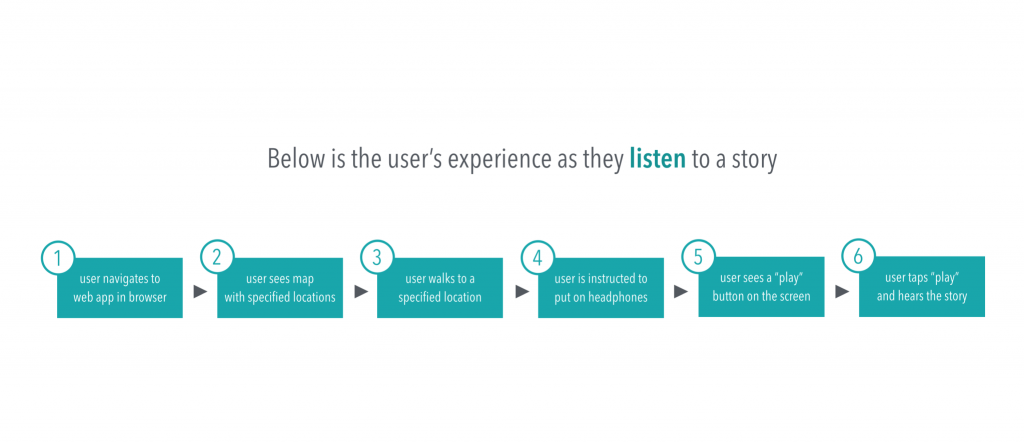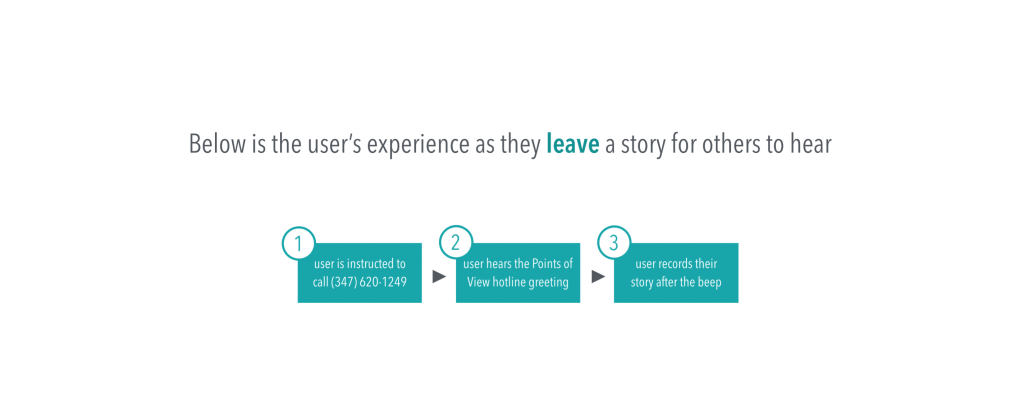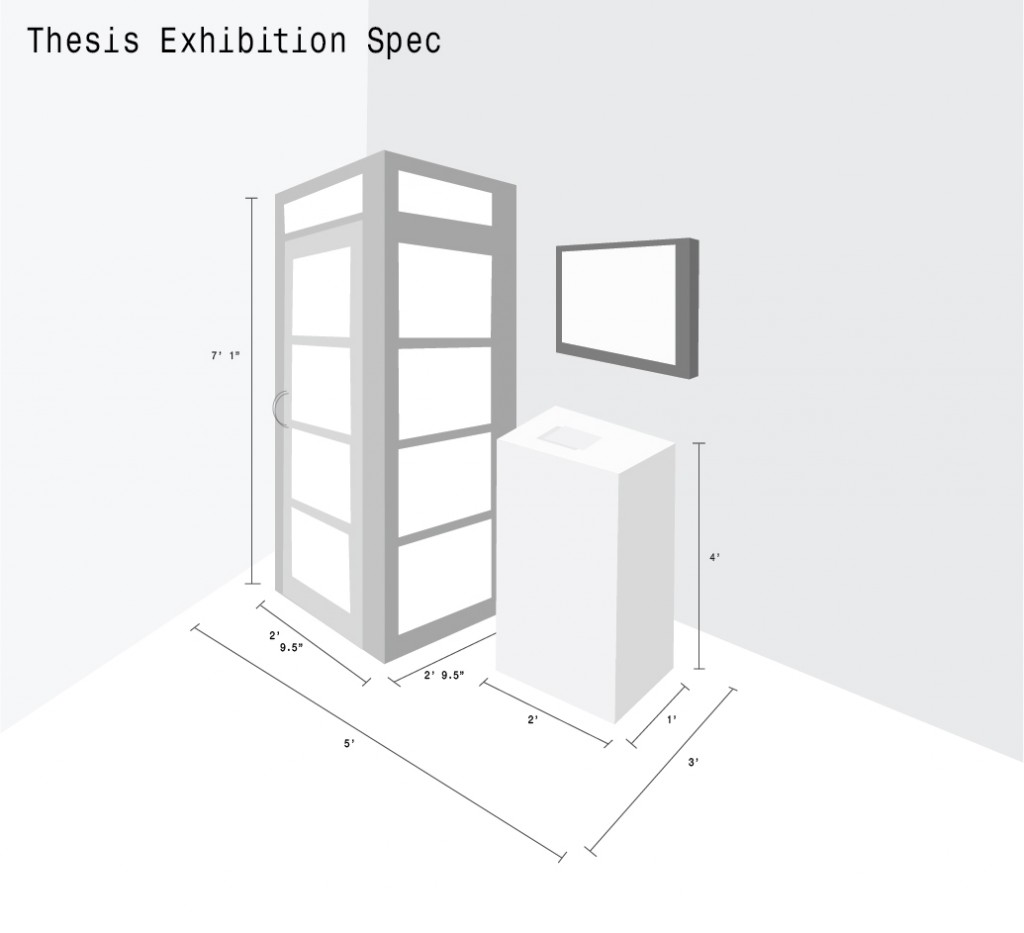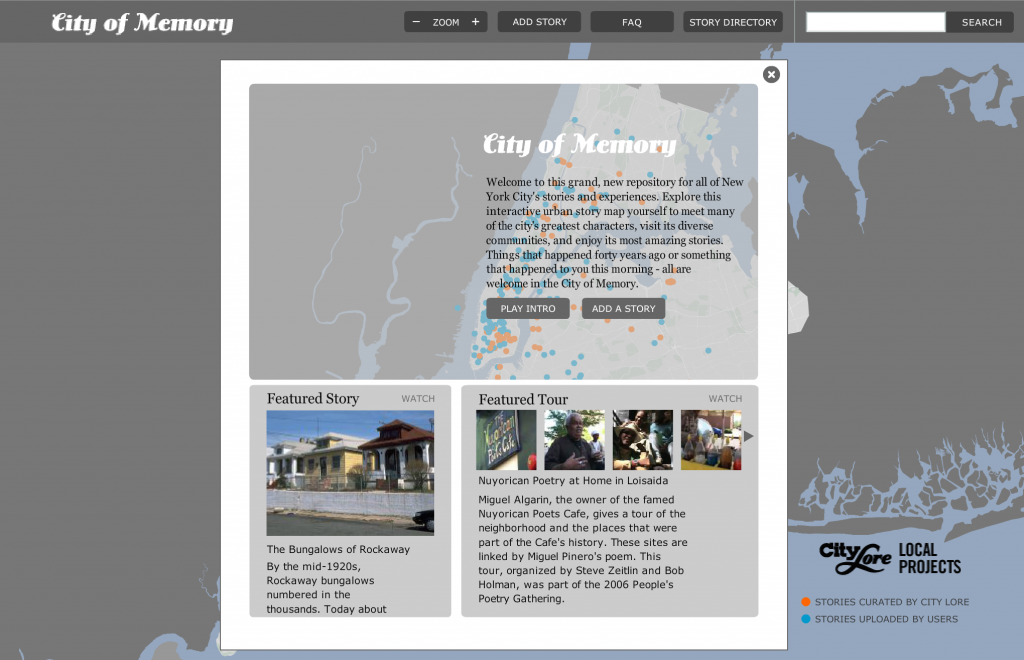Below is a narrative of an ideal user scenario…
Mark was on his way to meet a friend for lunch between classes. They were meeting at a new ramen place in the West Village that his friend had found on Yelp. It was September and seemed to be one of the last sunny and warm days of the year and because he was early, he took his time walking south on Fifth Avenue and crossing Washington Square South to enter the park. As he passed under the archway, he thought he saw a payphone just to the west of the fountain.
“Has that payphone always been there? he thought to himself.
He stopped in his tracks and squinted to get a better look. Sure enough, it seemed that a payphone had been installed in the park.
“Huh… I wonder if it works,” he thought.
Mark continued towards the payphone and picked up the receiver when he got close enough.
As he put the receiver to his ear, he heard a woman’s voice say “Washington Square was always my favorite park. We lived a few blocks away at the corner of Bleeker Street and Jones Street…”
After listening to the story, Mark hung the receiver back up. “Who was that?” he wondered. He examined the payphone a bit closer and realized that the phone looked a bit different than the old payphones. The glass window above the receiver that always housed instructions on how to use the payphones, instead included a different set of instructions.
Mark began reading the instructions: “Use this payphone to record a story about an experience you once had here in Washington Square Park.” The instructions continued below, “1. Pick up the receiver. 2. Press and hold the two button…” Below the instructions, it said “To do this online, visit http://nycstories.io on your smart phone.”
Mark took out his iPhone and entered the URL into Safari. A map of his location appeared along with a notification asking him to grant the site access to his current location. Mark noticed the time. It was 11:54 AM. He only had six minutes until he had to meet Josh and Lily. He hurried across the park and down Macdougal Street to the Ramen place.
Halfway through his lunch, Mark was started thinking about the mysterious payphone again.
“Did you see that payphone in the park?” he asked.
“No…” Lily explained.
“Payphone?” Josh asked.
“Yeah, there’s a weird payphone. When I picked up the receiver, I heard some woman telling a story about the park.”
“Oh weird! Let’s go check it out,” Josh said, enthusiastically.
“Actually,” Mark began, “I think we can see it on my phone. There was some URL posted that I copied before I got here with a map.”
Mark took his phone out and showed the others. The map appeared, centered on the Ramen place they were at. The map had a number of markers on it, one near the fountain in Washington Square Park, one at the northern end of the park, and one just a block over, near the corner of Thompson Street and Bleeker Street.
As he tapped each marker, text appeared saying “Navigate to this location.”
“Should we check it out?” Lily exclaimed, excitedly.
“Well, when is your class, Mark?” asked Josh.
“Not until 1:30. I think I have time to check it out.”
The three paid their bill and left the restaurant, heading south on Macdougal Street. As they turned onto Bleeker and then onto Thompson Street, the phone buzzed and an alert appeared, asking that they put on a pair of headphones.
“Crap, I don’t have headphones. Do you guys have some?” Mark said.
“Yeah, they’re in my bag. Hold on,” Lily explained.
She dug through the outer pocket of her backpack and pulled out a pair of turquoise headphones. Once they were plugged in, she pressed “Continue.” A man’s voice began “One day in the winter of 2010, I was walking down Thompson Street. It had just snowed the day before and everything was blanketed in white…”
Lily continued listening to the story, imagining the bustling street and warm day, instead, as a snowy, quiet and peaceful scene. When the story ended, Lily removed the headphones.
“So, what happened? Was it another story?” Mark asked.
“Yeah. This guy was talking about hearing the news that his Dad had died. It was on a cold and snowy day right here,” said Lily.
“Huh,” Josh said. “What else happened?”
“That’s really it. But it kind of reminds me of the last time I spoke with my aunt” Lily explained.
Lily examined the screen again. This time, it asked if she had a story she’d like to share. She quickly clicked “No” and handed the phone back to Mark.
A few a months later, as Lily was walking down Thompson Street, she was reminded of the story that she had heard about a man’s experience on the same block on that NYC Stories website that Mark had shown her. She whipped out her phone and typed the URL into her phone. The map appeared with a number of different markers added to the map.
Lily wandered around the neighborhood, listening to a number of other stories. She then decided to record a story of her own.
This time, when the prompt cam up asking her if she had a story she’d like to share about an NYC location. This time, she tapped “Yes.”
She was then prompted to walk to that location and tapped “Use This Location” when she arrived at the dorm she lived in during her freshman year.
She was then asked to record her story. Lily looked around her. There were a few students smoking near the entrance of the dorm, but other than that, she was one of the only people around. She held down the “record” button and spoke about her experience speaking with her aunt for the last time.
She then pressed “Submit.”




